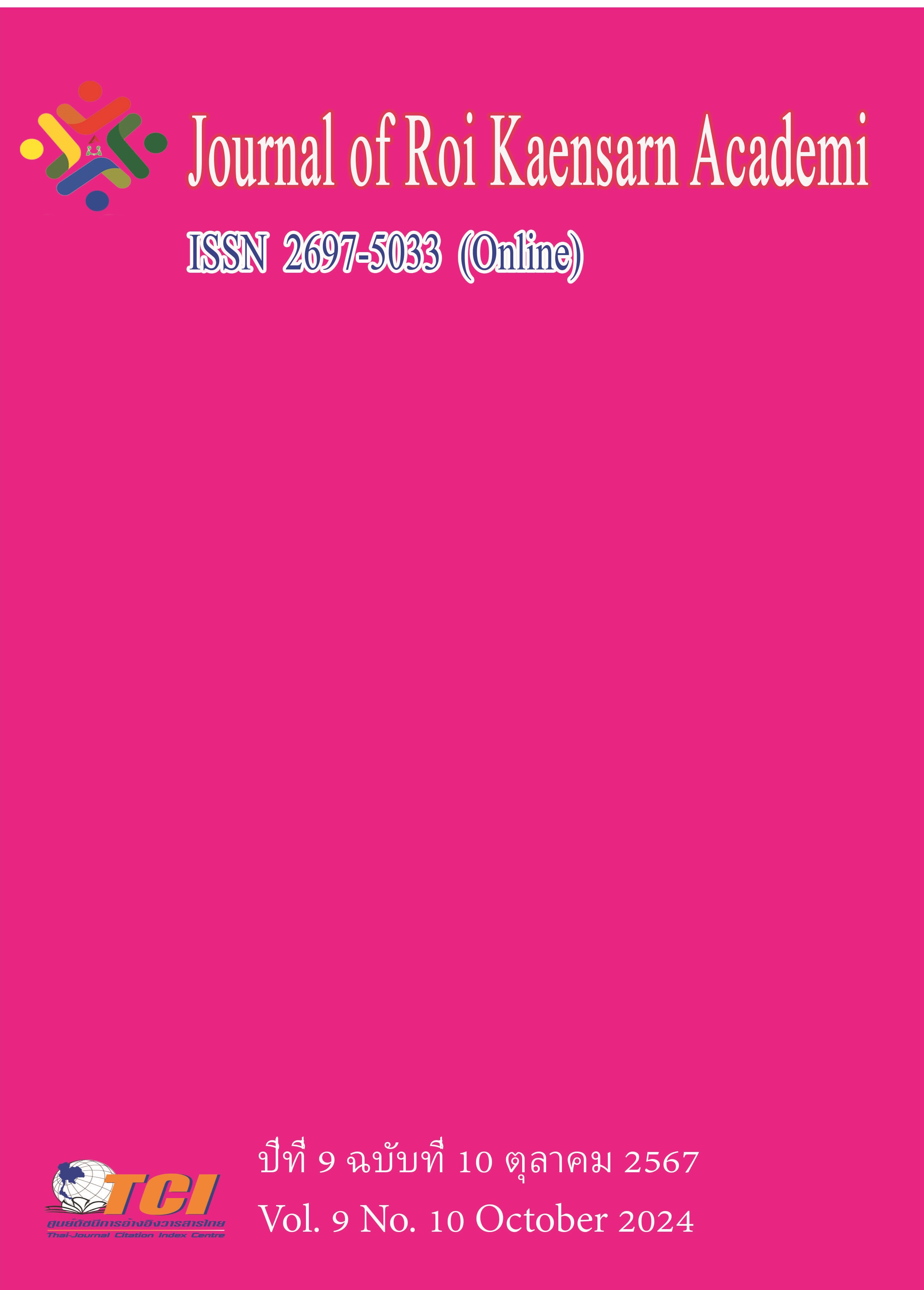The Influential Factors Affecting the Exercise Habits of Ethnic University Students at Kunming University: An Analysis Based on AMOS Structural Equation Modeling
Main Article Content
บทคัดย่อ
This study investigates the factors influencing exercise habits among ethnic university students at Kunming University, utilizing a sample of 1,017 students. The Delphi method identified 24 factors that influence the exercise habits of ethnic minority university students. Exploratory factor analysis was then conducted to further analyze the data, leading to the development of a model of these influencing factors, which was empirically tested using AMOS software. The findings suggest that exercise habits among ethnic university students are shaped by multiple factors, with individual influences being the most significant, followed by family, campus, and societal influences. This study provides theoretical insights for improving physical activity among ethnic university students, and based on these findings, several recommendations
Article Details
เอกสารอ้างอิง
Bagozzi, R. P., & Yi, Y. (1988). On the evaluation of structural equation models. Journal of the Academy of Marketing Science, 16, 74–94.
Benjamin Gardner, Lee Smith, Fabiana Lorencatto, Mark Hamer, & Stuart Jh Biddle. (2015). How to reduce sitting time? A review of behaviour change strategies used in sedentary behaviour reduction interventions among adults. Health Psychology Review, 10, 1–44.
Chen, M., & Yu, J. (2003). Motor skills and exercise habits. Journal of Beijing Sport University, 26 (3), 2.
Chiu, H. C. (2006). Quantitative research and statistical analysis: Analysis of data analysis examples of SPSS Chinese Window Version. Taipei City: Wu Nan Books.
Fornell, C. (1981). Structural equation models with unobservable variables and measurement error: Algebra and statistics. Sage Publications.
Li, J., Song , SH, Zhang, B., Li, J., & Chen, SM . (2022). Research on the physical condition of Tibetan and Lisu students aged 13-17. Proceedings of the 12th National Sports Science Conference: Abstract Compilation - Thematic Report (Physical Fitness and Health Subcommittee).
The State Council of the People’s Republic of China. (2016, October 25). The Central Committee of the Communist Party of China and the State Council issue the “Healthy China 2030 Plan Outline. fromhttps://www.gov.cn/zhengce/201610/25/ content_5124174.htm
Ming-Zhu Yuan, Chao-Chien Chen, I.-Shen Chen, Cheng-Chia Yang, & Chin-Hsien Hsu. (2022). Research on the Impact of Regular Exercise Behavior of College Students on Academic Stress and Sleep Quality during the COVID-19 Pandemic. Healthcare, 10, 2534.
Mo, L. F. (2007). The impact of the college sports environment on university students’ exercise habits. Journal of Jilin Sport University, 23 (2), 3.
Warburton, D. E. R., Nicol, C. W., & Bredin, S. S. D. (2006). Health benefits of physical activity: The evidence. CMAJ, 174, 801–809.
Xie, Y. F., Fang, Y. J., & Wang, H. N. (2004). Overview and prospect of research on exercise habits. Shandong Sports Science & Technology, 26 (1), 3.
Yue, H., & Xin, R. (2022). Research on ways to improve the physical health level of ethnic minority college students in China. Frontier of Modern Education, 3, 52–54.
Zou, X. Y. (1994). Discussion on cultivating students’ lifelong sports habits. Journal of Chengdu Sport University, 3, 3.

